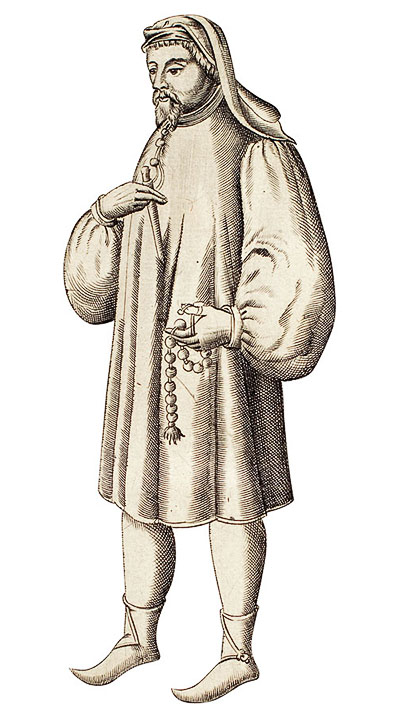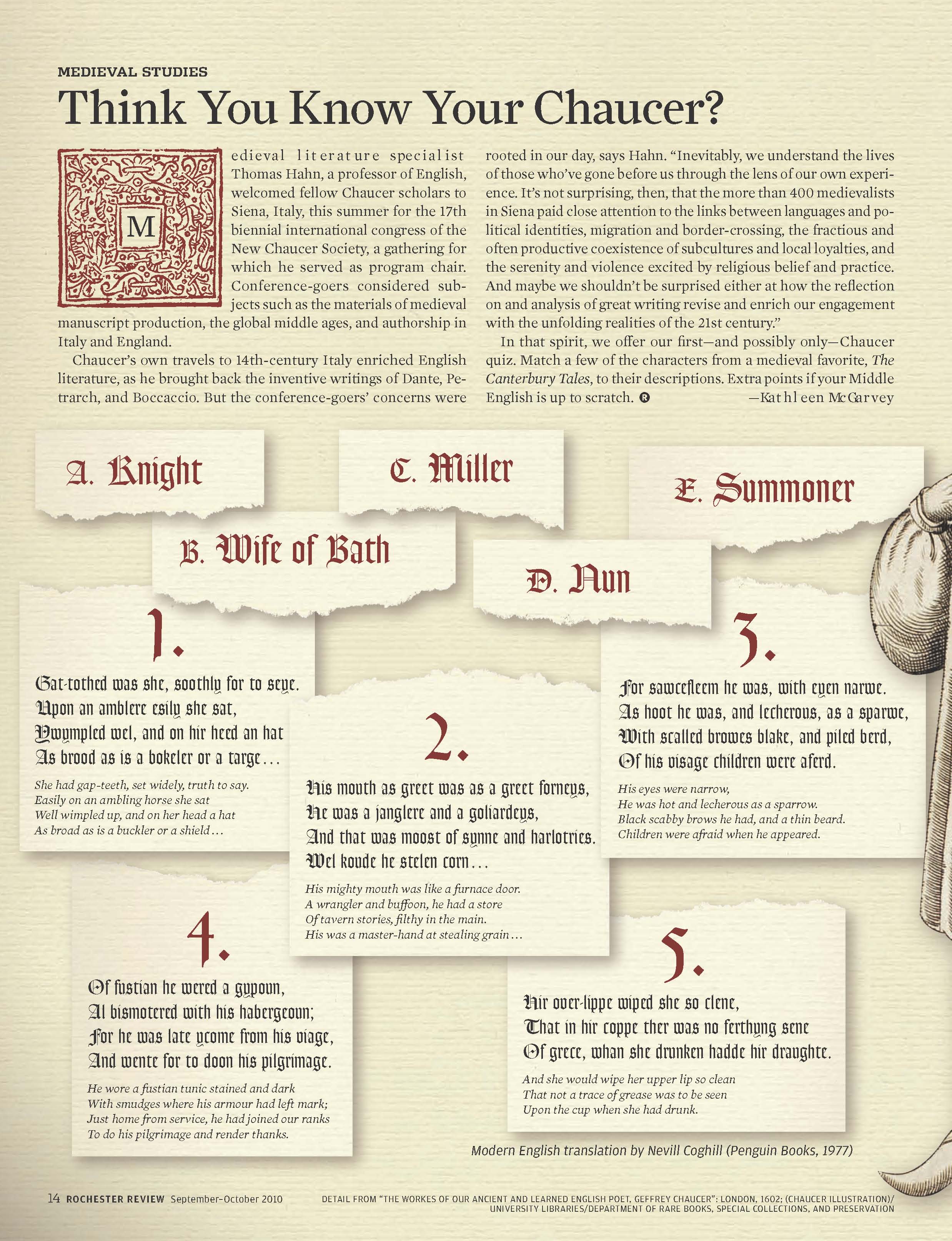In Review
 NEW CHAUCER: Reflecting on the work of medieval writers such as Chaucer can “enrich our engagement with the unfolding realities of the 21st century,” says Rochester scholar Thomas Hahn. (Photo: Detail from “The workes of our ancient and learned English poet, Geffrey Chaucer”: London, 1602/University Libraries/Department of Rare Books, Special Collections, and Preservation)
NEW CHAUCER: Reflecting on the work of medieval writers such as Chaucer can “enrich our engagement with the unfolding realities of the 21st century,” says Rochester scholar Thomas Hahn. (Photo: Detail from “The workes of our ancient and learned English poet, Geffrey Chaucer”: London, 1602/University Libraries/Department of Rare Books, Special Collections, and Preservation)Medieval literature specialist Thomas Hahn, a professor of English, welcomed fellow Chaucer scholars to Siena, Italy, this summer for the 17th biennial international congress of the New Chaucer Society, a gathering for which he served as program chair. Conference-goers considered subjects such as the materials of medieval manuscript production, the global middle ages, and authorship in Italy and England.
Chaucer’s own travels to 14th-century Italy enriched English literature, as he brought back the inventive writings of Dante, Petrarch, and Boccaccio. But the conference-goers’ concerns were rooted in our day, says Hahn. “Inevitably, we understand the lives of those who’ve gone before us through the lens of our own experience. It’s not surprising, then, that the more than 400 medievalists in Siena paid close attention to the links between languages and political identities, migration and border-crossing, the fractious and often productive coexistence of subcultures and local loyalties, and the serenity and violence excited by religious belief and practice. And maybe we shouldn’t be surprised either at how the reflection on and analysis of great writing revise and enrich our engagement with the unfolding realities of the 21st century.”
In that spirit, we offer our first—and possibly only—Chaucer quiz. Match a few of the characters from a medieval favorite, The Canterbury Tales, to their descriptions. Extra points if your Middle English is up to scratch. —Kathleen McGarvey
A. Knight
B. Wife of Bath
C. Miller
D. Nun
E. Summoner
1.
Gat-tothed was she, soothly for to seye.
Upon an amblere esily she sat,
Ywympled wel, and on hir heed an hat
As brood as is a bokeler or a targe
She had gap-teeth, set widely, truth to say.
Easily on an ambling horse she sat
Well wimpled up, and on her head a hat
As broad as is a buckler or a shield . . .
2.
His mouth as greet was as a greet forneys,
He was a janglere and a goliardeys,
And that was moost of synne and harlotries.
Wel koude he stelen corn
His mighty mouth was like a furnace door.
A wrangler and buffoon, he had a store
Of tavern stories, filthy in the main.
His was a master-hand at stealing grain . . .
3.
For sawcefleem he was, with eyen narwe.
As hoot he was, and lecherous, as a sparwe,
With scalled browes blake, and piled berd,
Of his visage children were aferd.
His eyes were narrow,
He was hot and lecherous as a sparrow.
Black scabby brows he had, and a thin beard.
Children were afraid when he appeared.
4.
Of fustian he wered a gypoun,
Al bismotered with his habergeoun;
For he was late ycome from his viage,
And wente for to doon his pilgrimage.
He wore a fustian tunic stained and dark
With smudges where his armour had left mark;
Just home from service, he had joined our ranks
To do his pilgrimage and render thanks.
5.
Hir over-lippe wiped she so clene,
That in hir coppe ther was no ferthyng sene
Of grece, whan she drunken hadde hir draughte.
And she would wipe her upper lip so clean
That not a trace of grease was to be seen
Upon the cup when she had drunk.
Answers: 1–B, 2–C, 3–E, 4–A, 5–D

